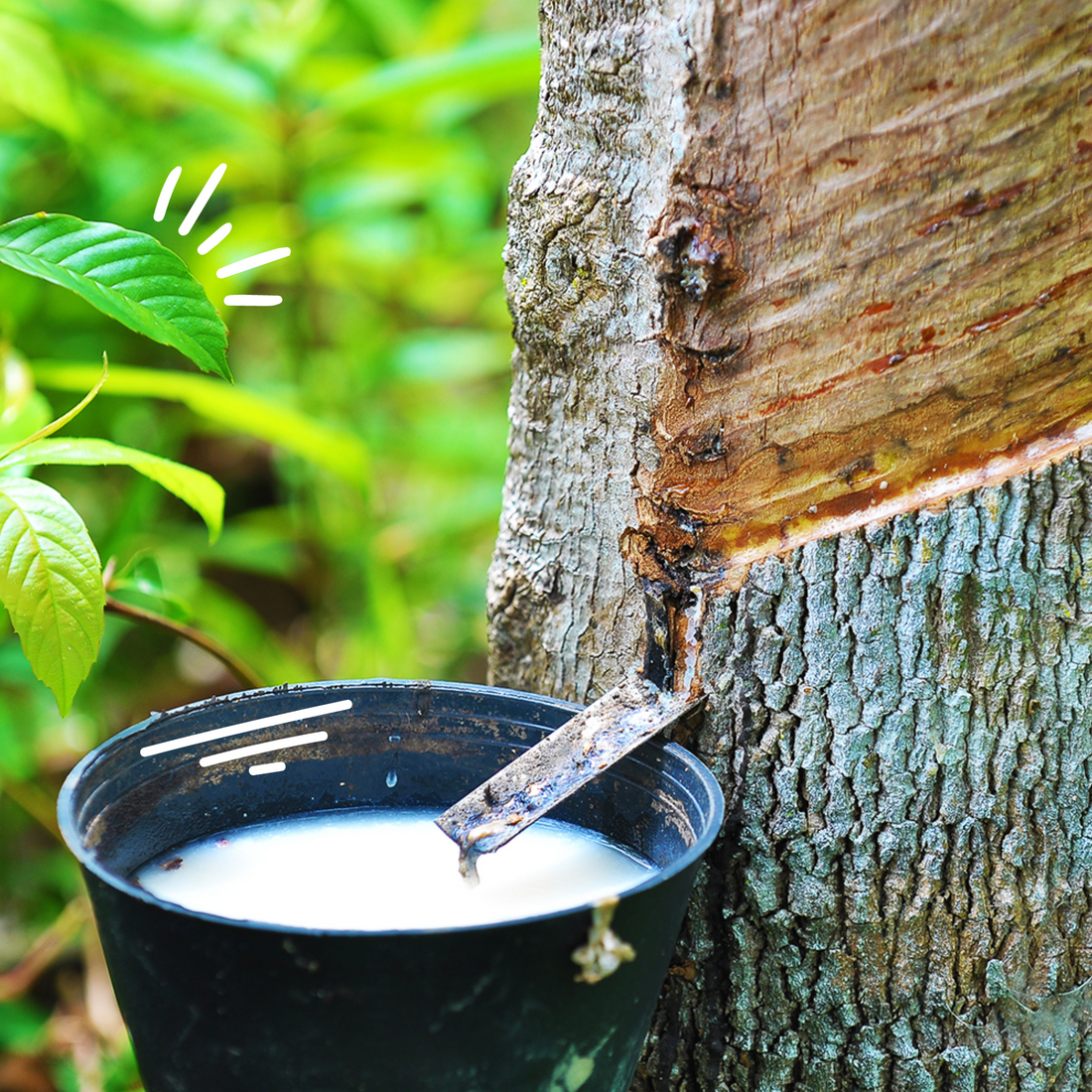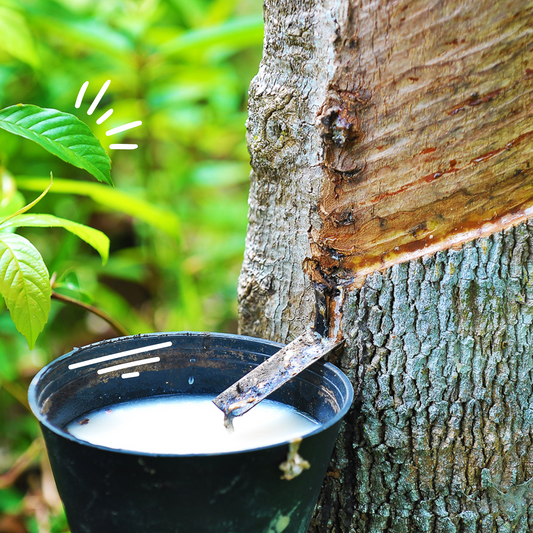In this article, we'll explores the topic of biodegradable balloons and their impact on the environment which explains what biodegradable balloons are and how they differ from traditional balloons, as well as their benefits and limitations. Additionally, we talk about some highlights for best practices for using biodegradable balloons in a sustainable way, emphasizing the importance of proper disposal methods to minimize harm to the environment.
Before we begin, let's go over some general information regarding latex and how it's made.
Natural latex
What is natural latex and how it's made?
Natural latex is a type of latex that is derived from the sap of the Hevea brasiliensis tree. The sap is harvested by tapping the tree and collecting the liquid latex that flows out.

Renewable and sustainable material, as the trees can be tapped for many years without harming them. It is highly elastic, resilient, and durable, making it a popular choice for a wide range of applications, including in the manufacturing of mattresses, cushions, balloons and other products that require support and comfort. Natural latex is also biodegradable, making it an eco-friendly alternative to synthetic materials.

Synthetic Latex
What is synthetic latex and how it's made?
Synthetic latex is a type of latex that is produced through a chemical process called emulsion polymerization, in which various monomers and chemicals are combined to create a polymer that mimics the properties of natural latex.

Unlike natural latex, synthetic latex is not derived from a renewable resource, and its composition can vary widely depending on the specific type of polymerization process used. Synthetic latex is commonly used in the manufacturing of products such as gloves, condoms, mattresses and balloons as well as in adhesives, coatings, and other industrial applications.
Differences between natural latex and synthetic latex?
- Source: Natural latex is obtained from the sap of rubber trees, while synthetic latex is made from petroleum-based chemicals.
- Chemical Composition: Natural latex is composed of natural proteins, while synthetic latex is made of a combination of chemicals like styrene and butadiene.
- Properties: Natural latex is known for its durability, elasticity, and softness. Synthetic latex, while also durable, is generally less elastic and has a firmer feel.
- Environmental Impact: Natural latex is a renewable resource, biodegradable, and can be sustainably harvested. Synthetic latex, on the other hand, is not biodegradable and is made from non-renewable resources.
- Cost: Natural latex is generally more expensive than synthetic latex due to the cost of production and limited availability. But since in tilco balloons we offer direct factory prices, the price is even lower than synthetic ones.
How biodegradable balloons are made?

How much time does it takes for a biodegradable balloon to decompose?





